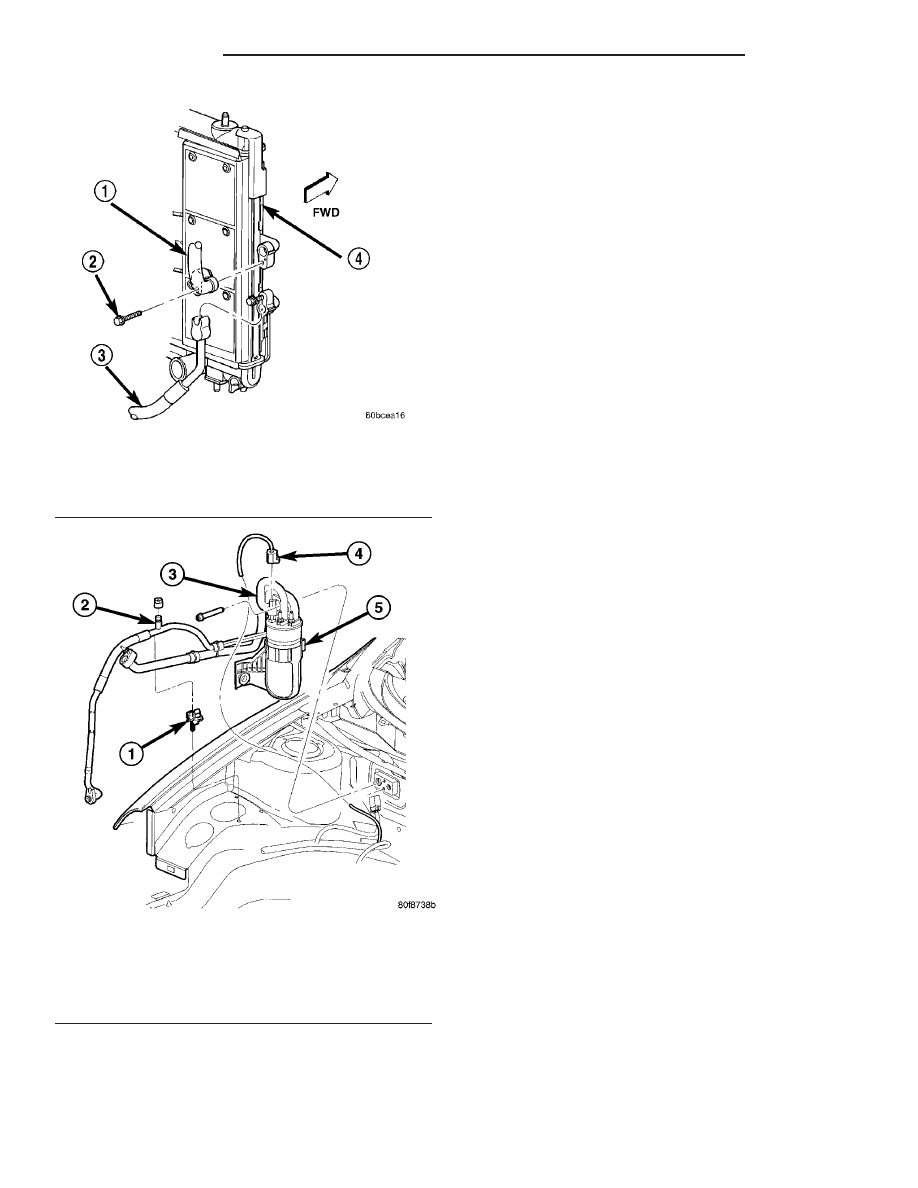Dodge Neon / Neon SRT-4. Manual - part 437

2.4L AND RHD MODELS
(1) Recover the refrigerant from the refrigerant
system (Refer to 24 - HEATING & AIR CONDITION-
ING - STANDARD PROCEDURE - REFRIGERANT
SYSTEM RECOVERY).
(2) Disconnect and isolate the negative battery
cable.
(3) Remove the bolt that secures the liquid line fit-
ting to the condenser outlet port (upper fitting) (Fig.
21).
(4) Disconnect the liquid line fitting from the con-
denser outlet port and remove and discard the O-ring
seal.
(5) Install plugs in, or tape over the opened liquid
line fitting and the condenser outlet port.
(6) If equipped, relocate the vehicle speed control
servo as necessary to access the receiver/drier.
(7) Remove the two bolts that secure the liquid
lines to the receiver/drier (Fig. 23).
(8) Remove the liquid lines from the receiver/drier
and remove and discard the O-ring seals.
(9) Install plugs in, or tape over the opened liquid
line fittings and receiver/drier ports.
(10) Remove the front section of the liquid line
from the engine compartment.
(11) Disconnect the front suction line fitting from
the mid-line connector block of the rear suction and
liquid line assembly and remove and discard the
O-ring seal.
(12) Install plugs in, or tape over the opened front
suction line fitting and the mid-line connector block
of the suction and liquid line assembly.
(13) Remove the bolt that secures the rear suction
and liquid line assembly to the A/C expansion valve.
(14) Disconnect the rear suction and liquid line
assembly from the A/C expansion valve
(15) Remove the gasket from the A/C expansion
valve and discard.
(16) Install plugs in, or tape over the opened rear
suction and liquid line fittings and both expansion
valve ports.
(17) Disengage the rear suction and liquid line
assembly from the retaining clips as required and
remove the rear suction and liquid line assembly
from the engine compartment.
INSTALLATION
2.0L LHD MODELS
(1) Position the liquid line into the engine com-
partment.
(2) Remove the tape or plugs from the suction and
liquid line fittings and the evaporator tube tapping
plate port.
(3) Install a new gasket onto the evaporator tube
tapping plate.
(4) Connect the liquid and suction line fittings to
the evaporator tube tapping plate.
(5) Install the two bolts that secure the liquid and
suction line fittings to the evaporator tube tapping
plate plate. Tighten the bolts to 10 N·m (88 in. lbs.).
Fig. 21 Refrigerant Lines - A/C Condenser
1 - LIQUID LINE
2 - BOLT (2)
3 - DISCHARGE LINE
4 - A/C CONDENSER
Fig. 22 Liquid Line - 2.0L LHD Models
1 - LIQUID LINE MOUNTING CLIP
2 - A/C CHARGE PORT
3 - A/C LOW PRESSURE SWITCH
4 - A/C LOW PRESSURE SWITCH CONNECTOR
5 - ACCUMULATOR
24 - 56
PLUMBING
PL/SRT-4
LIQUID LINE (Continued)